When should I add hops for taste and aroma? The advice these days advocates for whirlpool/steep and dry hop additions. Don’t late boil hops also add hop tastes and aromas? I brew 4 investigative batches to evaluate the impact of Mosaic hop addition timing, with additions at 30, 20, 10 and 0 minutes.
Motivation
When I started brewing back in the 1990s, I learned the undisputed proven facts of hops. Hops added at 60 minutes provided bitterness. Around 20 minutes, hops were added for taste. As the boil got to 5 minutes remaining, aroma hops were added. If you were adventurous, you added some flame out hops or one to two ounces of dry hops. Life was so simple!
Then, years later, NEIPA beers came along and undid much of the “solved” knowledge about hopping. Instead of neatly following the 60/20/5-rule, these beers had massive amounts of hops added at flameout, in a 180F whirlpool/hop stand, or as a dry hop addition. Beers were brewed with zero hops added during the boil! Huh? Hops added after the boil can add bitterness?!?
Whether I should or not, I still apply the core of the 60/20/5-rule to many styles of beers (such as Saisons, Porters, Stouts, etc.). For styles like American IPA and American Pale Ale, I have started moving hops later in the boil. For hoppy beers, I have even started moving my boils to 30 minutes in length with my bittering addition at 30 minutes. I don’t brew enough NEIPA style beers to claim to be an expert there, but I have brewed a few with very little “bittering” hops that were still in balance.
I won’t dig into the science of hop aromas and taste, mostly because I don’t understand it! There are plenty of articles, blog posts and books with more information. Scott Janish’s blog and book “The New IPA” is a must read for anybody that brew hoppy beers. Current research points out that many hop oils are volatile and boiling will quickly boil off hop taste and aroma.
I found myself not really understanding why I would want to use a 20-minute or 5-minute hop addition. As I moved hop additions more and more to flameout or whirlpool, I found that my American IPAs were missing some “hop bite” and hop characters that I enjoyed. I was not sure if my boil additions were just adding bitterness that I enjoyed, or if they actually added different tastes or aromas.
To test this out, I brewed some investigative trial batches with hop additions at 30 minutes, 20 minutes, 10 minutes and 0 minutes (flameout).
Note I tried to be deliberate about my use of the terms flavor, taste and character. Flavor and taste are often used similarly, but flavor is really a combination of senses. I decided to use the term character to refer to the overall impact of the hop taste, aroma, and bitterness.
Hop Addition Timing Video
I captured some details of my process as well as a blind tasting in a video. Both the video and this article provide a different spin on the information. Feel free to start with the video and come back to the article, or read through the article first.
Basic Brewing Radio Podcast
I sent off a set of beers to James and Steve at Basic Brewing Radio. They got together and also did a blind tasting to evaluate the hop characters in the four beers. James also interviewed me for the show to discuss my process and thoughts. You will have to listen along to see if the trained palettes of James and Steve can correctly identify the hop additions.
Hop Addition Timing Details
Essentially, I brewed 4 different 3/4-gallon batches each using
- 1 lb Briess Pilsen Light Dry Malt Extract
- 0.5 oz Mosaic (9.5% aa) added at 30/20/10/0
- 3 grams Cellar Science Cali dry yeast
My process was
- Measure 1 gal + 24 oz tap water (152 oz) [see note]
- Treat water with a “small amount” of a crushed campden tablet
- Bring to a boil and remove from heat
- Add 1 lb Pilsen DME and stir well
- Bring back to a boil
- Add 0.5 oz hops at target time remaining in boil (30/20/10/0)
- Boil each batch for a total of 30 minutes
- Chill with water and ice in sink down to 70F
- Transfer to fermenter through funnel and coarse filter
- Pitch 3 grams of Cali dry yeast
- Ferment in 65F to 70F range
- Bottle, condition, and sample.
Note: For each batch, I dumped about 16 oz of wort to avoid overfilling my 1-gallon fermenters. If I do a similar batch with a 30-minute boil in the future, I will reduce the initial water by 16 oz. In this case, I used the same 152 oz water for every batch to maintain consistency.
Also, I calculated I needed 0.04 grams of a campden tablet, but my scale was not registering that small amount. I just tried to use a little bit of a crushed tablet and to be consistent across batches. I could have instead batch treated a 5-gallon bucket of water.
Below are some pictures of the brewing and tasting process.
Hop Addition Timing Decisions
As always, there are many ways to approach this type of investigative batch. The core recipe using Pilsen DME and California yeast makes a solid base beer. There is some character and flavor, but not enough that it will interfere with the hops. Any clean flavor extract and yeast would be fine for this type of experiment. I calculated an OG of 1.052, but measured around 1.048. This will produce around a 5% beer, which I feel works well for investigative beers.
I debated about the hop variety and how much to use. I could have varied the amount for a specific IBU target. That would have been a valid trial. I decided I wanted to evaluate the impact of a fixed amount instead of relying on a questionable IBU calculation.
I thought about using a hop with a lower alpha acid level. This would likely reduce the bitterness of the 30-minute and 20-minute additions quite a bit. A generic American hop like Cascade and low aa% hops like Hersbrucker or Saaz just did not seem to fit my goals. I decided against some of the higher aa% hops I had on hand, like Citra and Simcoe. That helped me narrow down the options to the 6.2% Lemondrop hops or 9.5% Mosaic hops that I had on hand. Mosaic seemed like a good choice.
Mixing in a batch with hops added into a whirlpool or hop stand sounded like a good idea but I only have 4 of the same 1-gallon jugs I used as fermenters. A more valid shoot out would be more hops with additions at 5 min, 0 min, whirlpool and dry hop. I will file that one away for the future.
Hop Addition Timing Results!
I randomized the bottles and assigned them each a letter (A, B, C or D). I then poured a small glass of each beer. Without knowing which beer was which, I evaluated each of the beers for hop bitterness, hops taste and hop aroma. I then wrote some thoughts on each beer and attempted to determine which beer was which hop addition.
Hop Bitterness
Spoiler alert, I was able to identify the 4 beers correctly. Bitterness turned out to be my key to correct identification. The 30-minute addition beer had a lot of bitterness. It stood out from my first taste and the bitterness dominated the character of that beer. During my first pass at tasting, I swapped the bitterness order of the 0-minute and 10-minute addition. On another tasting I was able to correctly order the bitterness. There was a fairly clear pattern of reducing bitterness progressing from the 30-minute to the 0-minute beer. Maybe there is something to those IBU formulas.
Hop Taste and Aroma
I am lumping hop taste and aroma into one category as I have about the same thing to say about both. Plus, taste and aroma are the key components that combine to produce flavor.
When I first smelled the beers, I identified two that had more hop aroma. I was then confused when both of those beer also had the most bitterness. Taste was a similar pattern as aroma. My senses identified more hop taste in the more bitter beers. I was expecting to get more taste and aroma from the late addition hops, and more bitterness from the early addition hops. This confused me a bit.
As I dug into the differences in hop taste and aroma, I started to recognize that the hop taste and aroma was different. The 30-minute and 20-minute beers did have more hop taste and aroma, but it was more of a spicy, herbal, and generic type of hop character. The 10-minute and 0-minute beers had less overall hop taste and aroma, but it was more of the bright fruit, berry, tropical notes that I expect from Mosaic. That said, those characters were lighter than I would have expected.
Key Takeaways
Biases Impacted my Perceptions
While I did not know which beer was which, I knew the nature of the variable. I had preconceived ideas of what to expect. As I watched back my tasting video, I could see myself trying to fit beers into the boxes that I expected. With knowing the hop addition timings, my mind had to wrestle with the idea that a beer could have more bitterness and more hop character.
Based on my prior experience, I have a general set of tastes and aromas that I associate with Mosaic hops. I was going to find those, even if they were hard to pick out in the 10-minute and 0-minute beers. As of this writing, I have only done the one tasting. I want to further dive into the hop tastes and aromas of the individual beers.
30 Minute Hop Additions Provide Bitterness
The beer with the 30-minute addition was bitter! There is no doubt in my mind that a full 60-minute boil addition is not required to provide solid bitterness. I still have an open question about how much hop character a 60-minute addition provides vs a 30-minute addition. Recall, I felt that the 30-minute beer had a reasonable amount of spicy, herbal hop character. Would a 60-minute addition drive off this hop character and only leave the bitterness?
0.5 oz/gal of Late Hops Provides Moderate Taste and Aroma
The beers with hops added at 10-minutes and 0-minutes really did not have the hop taste and aroma that I had expected. While this was “only” 0.5 ounces, that would be roughly the equivalent of 2.5 ounces in a 5-gallon batch. That would be a fairly sizeable addition for a Pale Ale and not out of line for an IPA
This has me a little confused. My historic recipes have several for 5-gallon batches with a 2-ounce addition at flameout, and I think that added a reasonable amount of hop character. This is especially true for a flavorful hop like Mosaic. I could understand if it was just the 0-minute beer, as that beer had hops added and was immediately chilled faster than I could chill a 5-gallon batch. In the 10-minute beer, the hops had plenty of time to impart more character.
This finding might justify some of the hop levels found in today’s recipes. I used to brew IPAs with 4 or 5 oz of total hops, mostly in the boil. These days, I find myself adding that amount of hops late in the boil/hopstand AND in dry hop additions. Some of my hoppy 5-gallon batches have around 1 pound of hops, and I have see recipes calling for 1 pound of dry hops!
Mid-Boil Hops Do Provide Character
I was surprised with how much hop character I perceived in the 30-minute and 20-minute hop addition beers. It reinforces some of my prior experience from brewing IPAs telling me that additions in the 20-minute and 15-minute range do provide some “hop bite.” I will also likely continue to add hops around the 10-minute and/or 5-minute mark. Experience points to hops like Chinook and Simcoe providing elevated pine character when added to the boil.
Follow on Investigations
While I do think that this investigation provides some insight into some of my questions about hop, it also raised a few questions and plants the seeds for future investigative batches.
30-Minute vs 60-Minute
While I have been moving hoppy beers toward 30-minute boils, is there a difference in the character between 30-minute and 60-minute additions? Can I start to move more beer styles, such as Saisons or Porters, to 30-minute boils without impacting the hop character?
5-Minute vs Flameout vs Whirlpool vs Dry Hop
I specifically decided to add the same amounts of hops at each timing. I had to pick a middle ground between bitterness of the 30-minute addition and the character of the 0-minute addition. What would the impact be of a larger hop addition later in the boil? How would that compare with a dry hopped beer?
Impact of Different Hops
How much of the results of this investigation extends beyond Mosaic? Would the results be different from Chinook, Citra, Idaho-7, or any number of other hops? Are there hops with similar hop compounds as Mosaic that would perform the same?
Your Feedback and Thoughts
I would love to hear more from you about your current hopping schedule. Do you still add hops into the boil? Are you adding most of your hops in a whirlpool/hopstand and in dry hop additions? Do you have any similar or different results that you want to share?
Please leave any comments, suggestions, or questions in the comments section here or on the YouTube video.

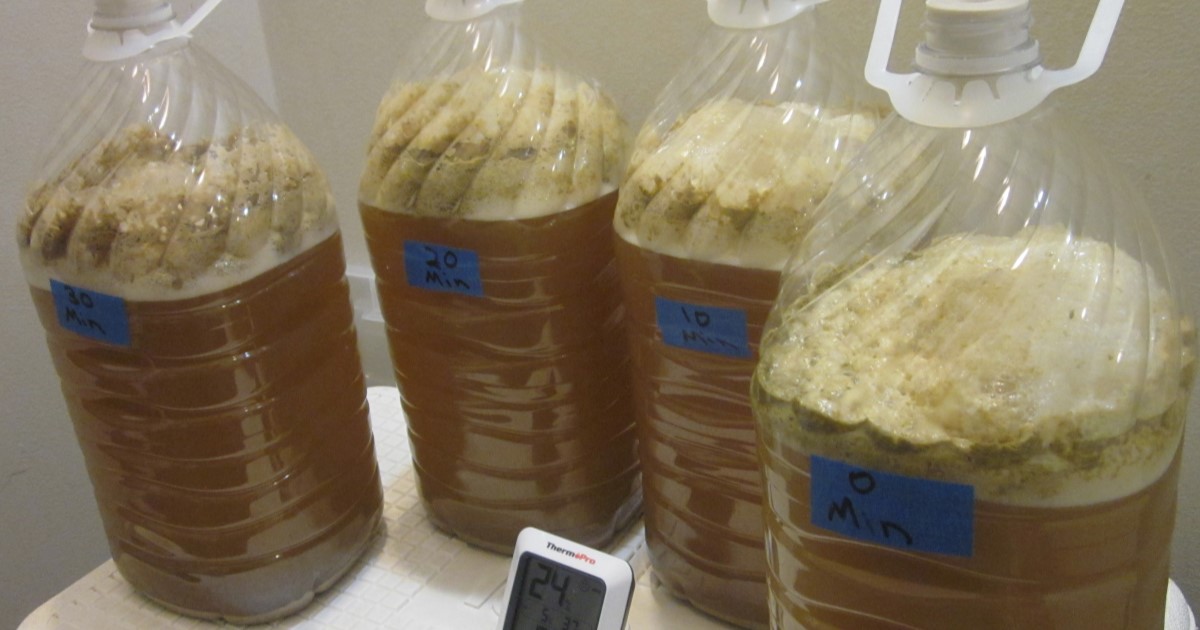
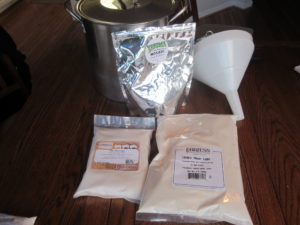
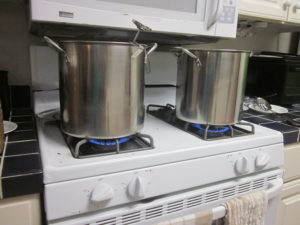
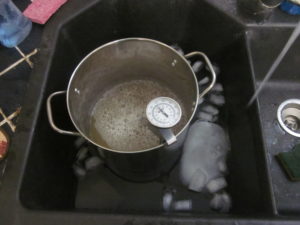
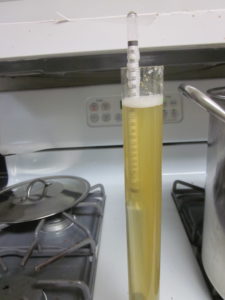
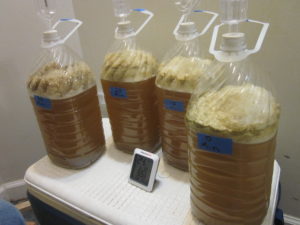
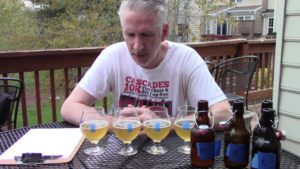
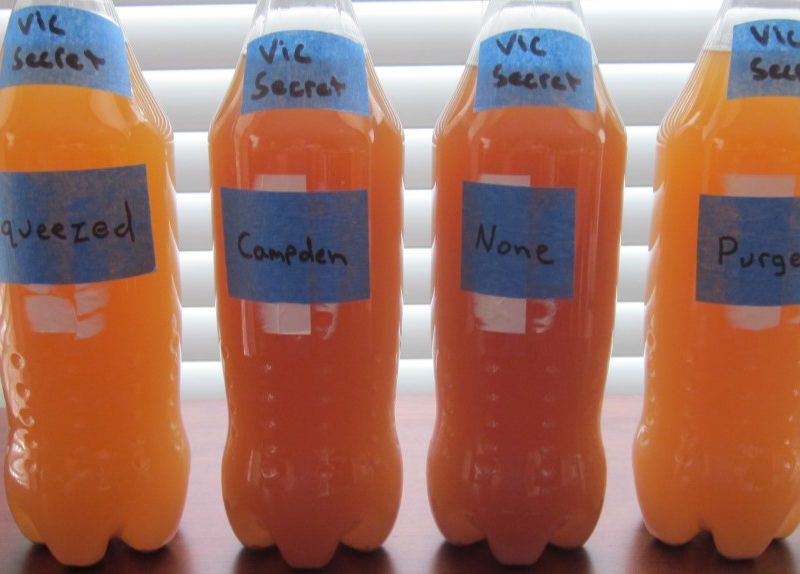
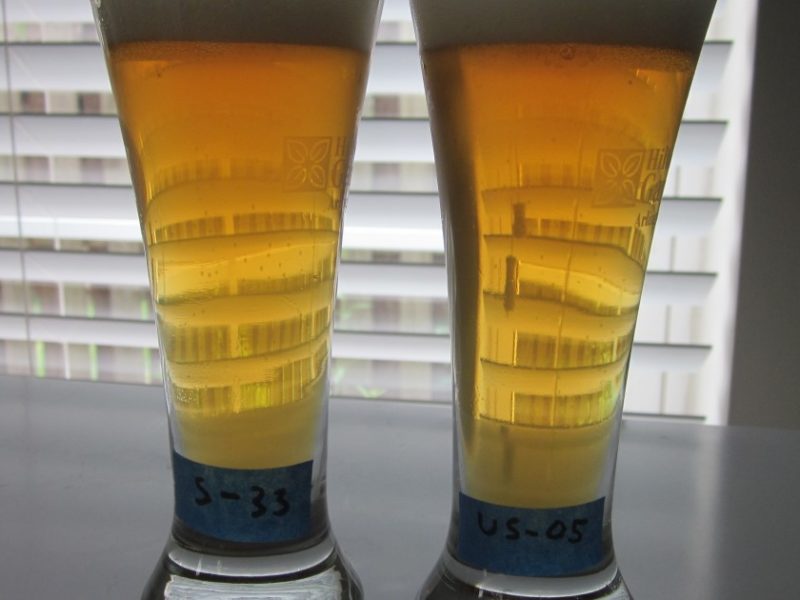
I’m still doing 60, 10 hop additions. May try moving my late addition up a few minutes as your findings suggested. I’m not a real lover of heavy hop flavors, but some of my friends are.
Great experiment and thanks for the write up… I’ve always found a solid 20 min addition gave a ‘bump’ in the swallow. Not bitterness, nor flavour as such, but a fuller hop presence. Like a more rounded & fuller hoppy beer in general.
Yeah, I have found that when I brewed an American IPA without any additions in the 10 to 20 minute range, they were missing some of that “hop character” that I expect in the style. For an NEIPA I might just load up the hops in a whirlpool/steep addition, but for an American IPA or Pale Ale, I like that mid-late boil addition.